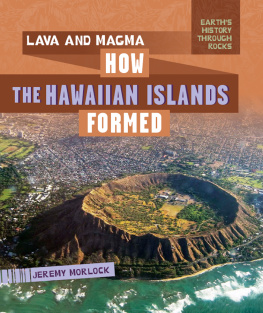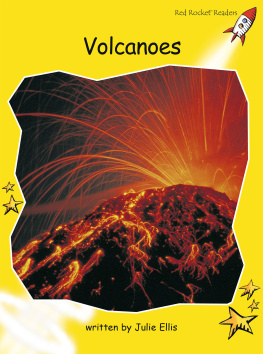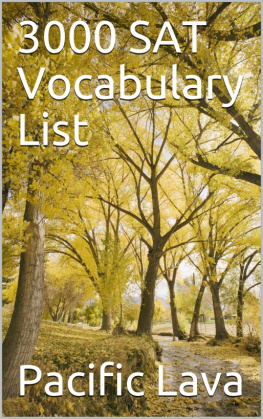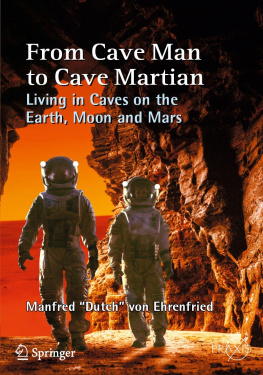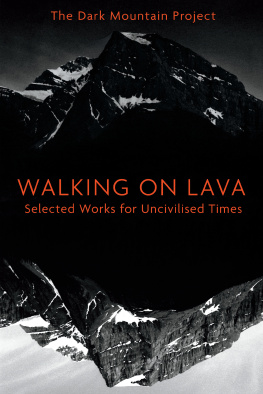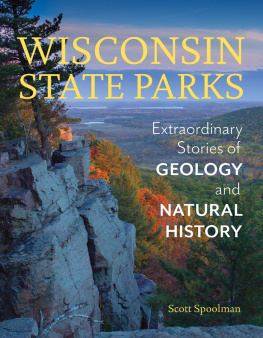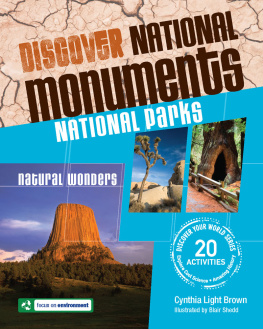
IMAGES
of America
LAVA BEDS
NATIONAL MONUMENT
ON THE COVER: Two Lava Beds National Monument visitors are pictured crawling through one of the monuments more than 700 lava tubesthe largest concentration of these types of caves in the continental United States. Only one cave at Lava Beds National Monument is lighted with illuminated interpretive signs. Several in the Cave Loop Road area and elsewhere have trails and entrances with signs.
IMAGES
of America
LAVA BEDS
NATIONAL MONUMENT
Lee Juillerat

Copyright 2015 by Lee Juillerat
ISBN 978-1-4671-3407-1
Ebook ISBN 9781439653173
Published by Arcadia Publishing
Charleston, South Carolina
Library of Congress Control Number: 2015935764
For all general information, please contact Arcadia Publishing:
Telephone 843-853-2070
Fax 843-853-0044
E-mail
For customer service and orders:
Toll-Free 1-888-313-2665
Visit us on the Internet at www.arcadiapublishing.com
This book is dedicated to J.D. Judd Howard, the person most responsible for Lava Beds being designated as a national monument.
Because of Howards efforts to preserve the unique features of Lava Beds, he is called The Father of Lava Beds. I have a special appreciation and link to Howard. Years ago, after a day of exploration with thenpark ranger Mac Hebner, I was in the park library rummaging through boxes searching for historical tidbits. It was after midnight, I was tired, and I wanted to be done. I grabbed the final box, which was stuffed with original and mimeographed letters and papers written by Howard, who had settled in nearby Klamath Falls, Oregon, in the early 1900s. That night, I scanned through Howards typewritten papers. As I turned one letter aside, something hit homeliterally. I flipped back the page and reread the letterhead that began, From the desk of J.D. Howard, with his address. My address. That was when I learned I live in Howards old house, where he died in 1961 at age 81. I am sure it was my imagination, but as I stared at the letterhead, I thought I heard an old mans laugh.
CONTENTS
ACKNOWLEDGMENTS
Mike Reynolds, the former superintendent at Lava Beds National Monument, was the motivational force in creating this book to help visitors better understand the monument. Reynolds is the most recent in a series of superintendentsincluding David Kruse, Craig Dorman, Doris Omundsen Bowen, James Sleznick, Paul Haertel, and William Kennedywho have encouraged me to learn more about Lava Beds and its rich history. I thank them also for their friendship and eagerness to help me and others appreciate the monument. My thanks also to Jessica Middleton, the monuments chief of natural resources, who was instrumental in providing access to historical photographs.
I have also enjoyed the friendship of dozens of Lava Beds personnel over the past 40-plus years, including James Blaisdell, Gary Hathaway, Mac Hebner, Steve Underwood, Kale Bowling, John Krambrink, Angela Sutton, Terry Harris, Nancy Nordensten, Jesse Barden, and many, many others. The wealth of publications about the area provides great insight into the monuments multidimensional history. Delightfully, I have had the pleasure of working with and knowing some of the authors of those publications, including Carrol B. Howe, Keith Murray, Charlie Larson, Frederick Brown, Boyd Cothran, Cheewa James, and Daniel Woodhead. Their histories help keep the stories of Lava Beds alive.
All images in this volume appear courtesy of Lava Beds National Monument.
INTRODUCTION
Lava Beds National Monument is often called the Land of Burnt Out Fires, and for good reason. Lava Beds is a region shapedsome might say tormentedby volcanic events and a fiery human history highlighted by Californias only Indian war, the Modoc War, fought in 1872 and 1873. The Modoc War drew international attention, resulted in the death of an Army general, and led to the hanging deaths of three key Modoc leaders and the forced relocation of most of the tribe.
In far northern California, the landscape hints at what exists below the surface. It is a landscape that begs exploration above and below ground, whether for its unusual geology or its unique human history. The area below ground is truly fascinating, hosting an intricate network of more than 700 lava tube caves that reach out like underground tentacles. No two are exactly alike, and many are fascinatingly different. Some have ferns, while others have complex ice formations. Several contain seasonal populations of rare bats. Many caves show signs of human visitation ranging from pictographs created by ancestral Native Americans to markings made by J.D. Judd Howard, the early Lava Beds explorer who used white paint to record the caves names and dates of discovery.
Lava Beds has a rich history and great potential for an even more impressive future. Ongoing studies of bats, wildlife, and lichen have created a greater understanding of the monuments natural resources. The use of GPS has allowed researchers to set the number of lava tube caves at Lava Beds at more than 700, when, years ago, the number of caves was estimated at more than 200.
Not all of the increased knowledge stems from technological advances. The number of fortifications and other features discovered in Captain Jacks Stronghold, which Modoc Indians occupied during the Modoc War, greatly increased following a fire that burned through the area and exposed structures made by the Modocs and, after they left the Stronghold, Army troops.
Howard and others who lived at or explored the Lava Beds would be surprised, and probably delighted, by the new insights and information.

Valentine Cave, which Ross Musselman discovered on Valentines Day in 1933, is among the easiest caves to access at Lava Beds. The cave is known for its relatively high ceilings and unusual floor. Cave discoverer Ross Musselman saw the cave breathing steam during a cool morning (the temperature was -12 F), grabbed a lantern, ran from Indian Wells, and located the cave entrance, which was small and obscured by a juniper tree. Wide passages make it easy for visitors to walk in Valentine Cave. Geologists say the final flow was a brief, highly fluid surgeabout three feet deepthat, as it drained out the lower end, smoothly blanketed previous irregularities with a thin lining.
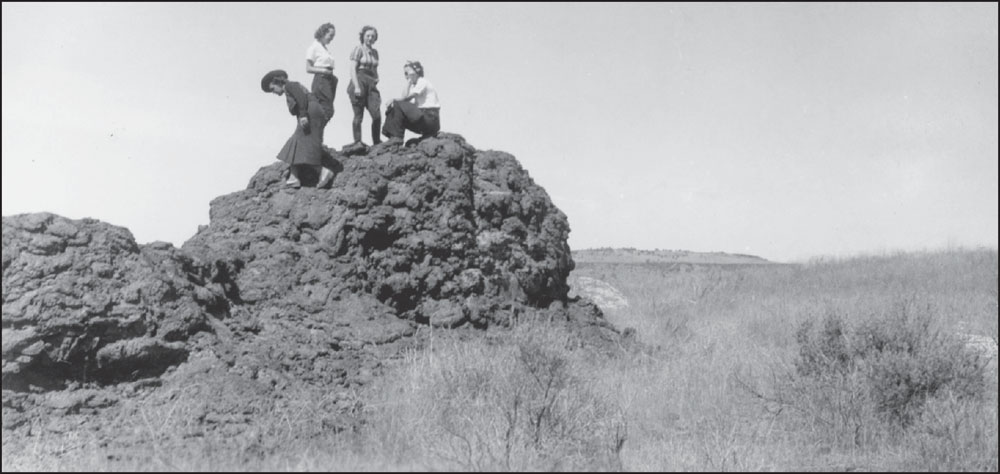
Among the curious volcanic features found throughout Lava Beds National Monument are spatter cones: low, steep-sided hills or mounds of welded lava fragments that form along a linear fissure or around a central vent. As lava fragments erupt into the air, they often do not have time to cool completely before hitting the ground.
One
GEOLOGY
Call it a case of cataclysmic chaos. Hundreds of thousands of years of volcanic activity have shaped and reshaped the tortured, often inhospitable landscape that encompasses the Lava Beds National Monument. It is a landscape created by repeated flows of magma that emerged from vents on the northern flank of the massive Medicine Lake shield volcano, which spreads across 900 square miles. Over millennia, and as recently as 1,100 years ago, recurring seismic events have created lava flows, including smooth and ropy pahoehoe and rough, ragged aa. These events also formed the monuments chimney-like spatter cones, 300-foot tall cinder cones, and more than 700 lava tube caves.
Next page

